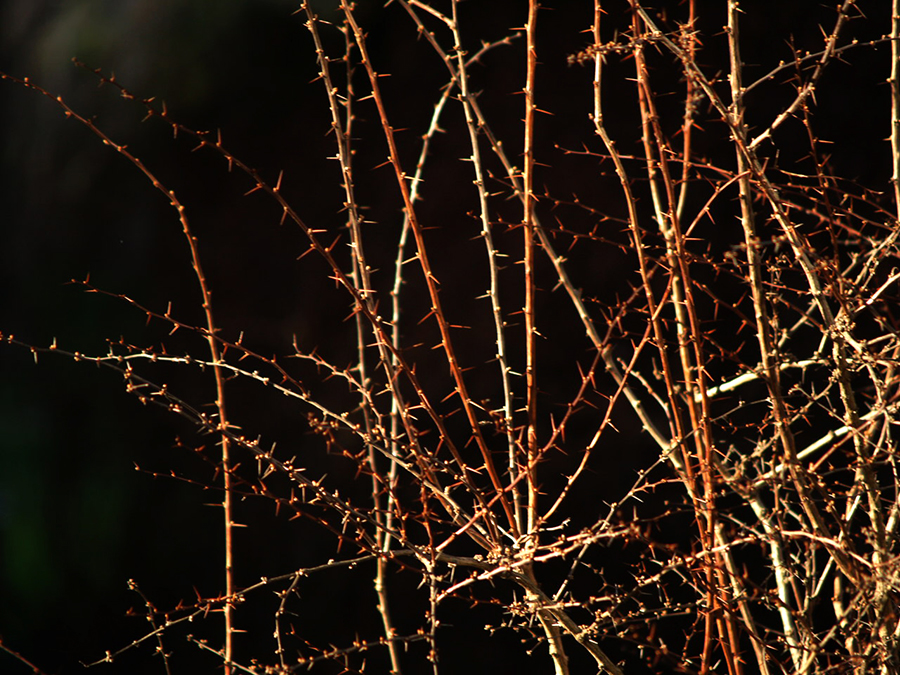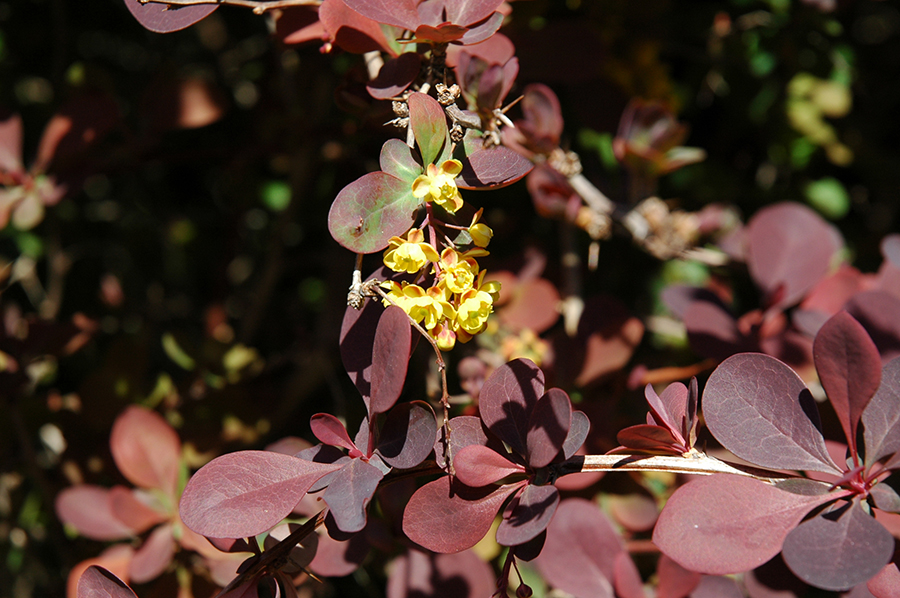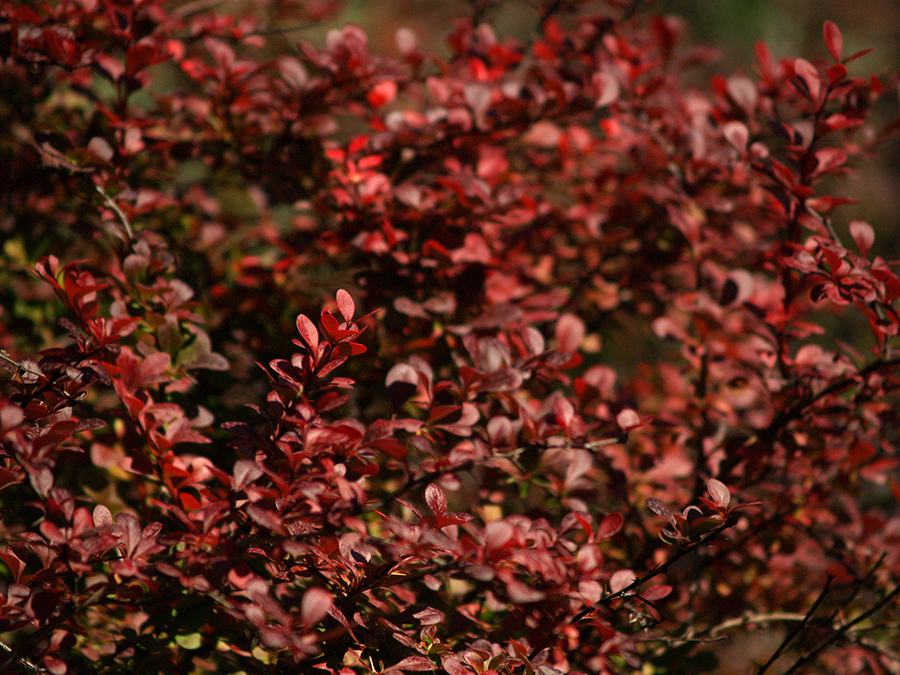
Japanese Barberry
Berberis thunbergii var. atropurpurea
Family and description
Of the Berberis genus and Berberidaceae family, the Japanese barberry, is a small deciduous shrub that can reach a height of up to 1.5m. It is woody, densely branched, with greyish-brown branches, where pointed spines are distributed.
The leaves are simple, opposite, spatula-shaped, purple in spring and summer and orange in autumn. In spring it produces inflorescences named umbels, with small flowers made up of yellow petals and reddish-yellow sepals, which attract bees.
The fruit, small ovoid red berries that contain a single seed, appear in the autumn.
Origin and habitat
Originally from Japan and East Asia, it enjoys the cool temperatures of temperate and subtropical climates.
Uses and curiosities
Used as an ornamental plant in gardens and parks, this shrub is tolerant to pruning and can be used for hedges, efficiently protecting against invaders due to its powerful spines. It can be planted in pots and also adapted to Bonsai. It is considered an invasive plant in some countries.
It should be grown in full sun or partial shade, in fertile soil with good drainage and organic matter content and irrigated regularly. It grows slowly and is therefore low-maintenance. The shrub’s presence can cause an increase in soil pH and affect nitrogen levels. It is tolerant to pollution and drought but does not resist waterlogging for prolonged periods. It is multiplied by seeds, cuttings, layering and root division.
The fruit is edible and much appreciated by small birds.



